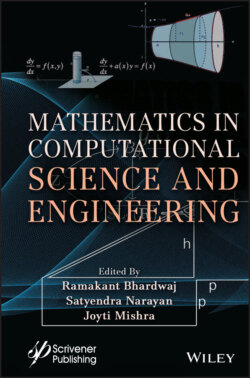Читать книгу Mathematics in Computational Science and Engineering - Группа авторов - Страница 46
2.1 Introduction
ОглавлениеThe keywords ill-posed inverse problems have been reported in the scientific literatures since the beginning of the 20th century. In physics, it is reported as an inverse problems of quantum scattering theory. In geophysics, it is reported as an “ill-posed inverse problem” of electrical resistivity mapping, seismic mapping, and gravitational-potential field mapping. It has also appeared in astrophysics and other areas of science and engineering. With recent advances in mathematical computing and powerful computers over the past decades, application of inverse and ill-posed problems, its theories and the associated mathematical methods has been extended to almost every field of science and engineering. In forward numerical modelling of physical sciences, researchers attempt to formulate appropriate functions. These functions are used to describe different physical processes involving propagation of seismic waves, sound waves, electromagnetic waves, and heat waves, etc.
To understand ill-posed inverse problems thoroughly in the field of science and engineering, it is important to understand the meaning of ill-posed and well-posed problems, and the concept that may be applied to solve the ill-posed problems. In mathematical notation, a well-posed problem has a system of partial differential equations that can be solved uniquely, and it has a unique solution and depends continuously on the input data. In other words, well-posed mathematical models of the physical processes (e.g., Dirichlet problem for Laplace’s equation, heat flow equation with given the initial conditions, etc.) in science and engineering have three well-defined properties: a solution exists for the model, solution of the model is unique, and the model solution’s is continuous with the changes in initial conditions (also called parameters or input data). These three properties are also described as existence, uniqueness and stability. It is important to note that the ill-posed problems do not meet all these three well-defined properties. A problem that is not well-posed is known as ill-posed. Several first-order differential equations and inverse problems are ill-posed. If the physical problem or mathematical model is not well-posed, it is required to be reformulated for numerical computation. Typically, ill-posed models or problems require additional assumptions (e.g., smoothness of solution) and the process is usually called as regularization [1]. In geophysical literature, Tikhonov regulation is one of the highly used regularizations for the ill-posed problems.
Continuous mathematical models are often discretized to obtain numerical solutions. These solutions may be continuous with respect to the initial parameters. Furthermore, when these problems are solved with a finite precision, it may suffer from a numerical instability. Even though these problems are well-posed, they may be ill-conditioned. Here, the meaning of ill-conditioned refers to a small error in the initial data resulting in a larger error in the solution. In mathematical literature, an ill-conditioned problem is defined by a large condition number, which is a measure of sensitivity of the model. This gives indication quantitatively how much error is in the output from an error in the input. A physical model is called well-conditioned if it has a low condition number. If the condition number is high, it is called ill-conditioned.
An inverse problem in the field of science and engineering is a process of calculating physical model parameters from a set of real or synthetic observations (in other words, computing the input parameters from the output data/results). Examples are computing images in X-ray computed tomography, source reconstruction, calculating density distributions of the Earth material from the measured gravity potential field, etc. It is known as an inverse problem because it starts with the results of the physical model and computes the physical model parameters (called input to the model). In other words, this can be viewed as the inverse of a forward problem, which starts with the causes and then calculates the effects.
Linear or non-linear Inverse problems are very important mathematical problems in the field of science and engineering. This is due to the fact that these problems give us information about the parameters that cannot be accessed or observed directly. These problems have a wide range of applications in system identification in the field of science and engineering including natural language processing, machine learning, nondestructive testing, and many other domains. This paper is focused on in-depth analysis of ill-posed inverse problems that are usually common in electrical geophysics.
